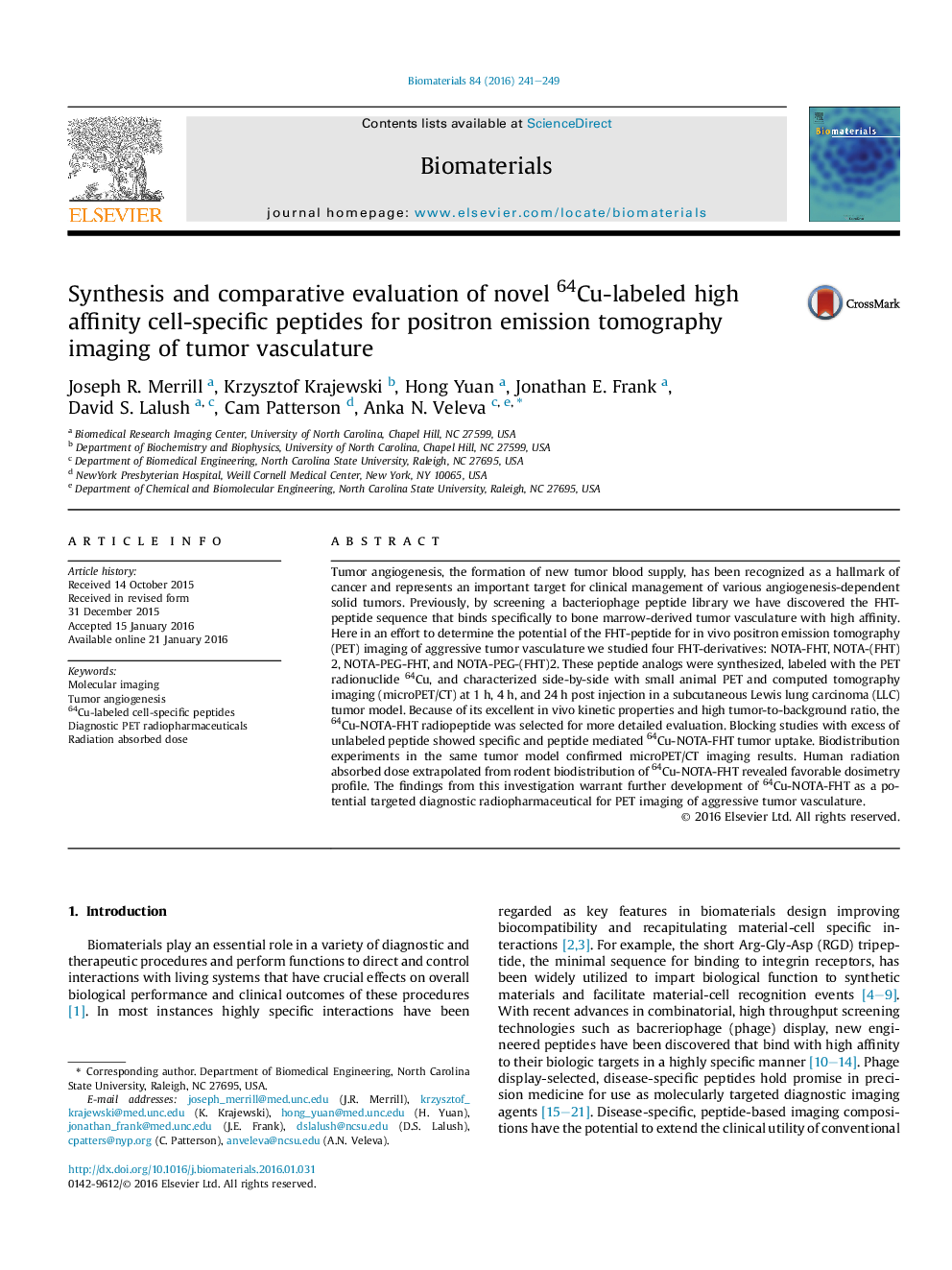| Article ID | Journal | Published Year | Pages | File Type |
|---|---|---|---|---|
| 6485099 | Biomaterials | 2016 | 9 Pages |
Abstract
Tumor angiogenesis, the formation of new tumor blood supply, has been recognized as a hallmark of cancer and represents an important target for clinical management of various angiogenesis-dependent solid tumors. Previously, by screening a bacteriophage peptide library we have discovered the FHT-peptide sequence that binds specifically to bone marrow-derived tumor vasculature with high affinity. Here in an effort to determine the potential of the FHT-peptide for in vivo positron emission tomography (PET) imaging of aggressive tumor vasculature we studied four FHT-derivatives: NOTA-FHT, NOTA-(FHT)2, NOTA-PEG-FHT, and NOTA-PEG-(FHT)2. These peptide analogs were synthesized, labeled with the PET radionuclide 64Cu, and characterized side-by-side with small animal PET and computed tomography imaging (microPET/CT) at 1 h, 4 h, and 24 h post injection in a subcutaneous Lewis lung carcinoma (LLC) tumor model. Because of its excellent in vivo kinetic properties and high tumor-to-background ratio, the 64Cu-NOTA-FHT radiopeptide was selected for more detailed evaluation. Blocking studies with excess of unlabeled peptide showed specific and peptide mediated 64Cu-NOTA-FHT tumor uptake. Biodistribution experiments in the same tumor model confirmed microPET/CT imaging results. Human radiation absorbed dose extrapolated from rodent biodistribution of 64Cu-NOTA-FHT revealed favorable dosimetry profile. The findings from this investigation warrant further development of 64Cu-NOTA-FHT as a potential targeted diagnostic radiopharmaceutical for PET imaging of aggressive tumor vasculature.
Keywords
Related Topics
Physical Sciences and Engineering
Chemical Engineering
Bioengineering
Authors
Joseph R. Merrill, Krzysztof Krajewski, Hong Yuan, Jonathan E. Frank, David S. Lalush, Cam Patterson, Anka N. Veleva,
